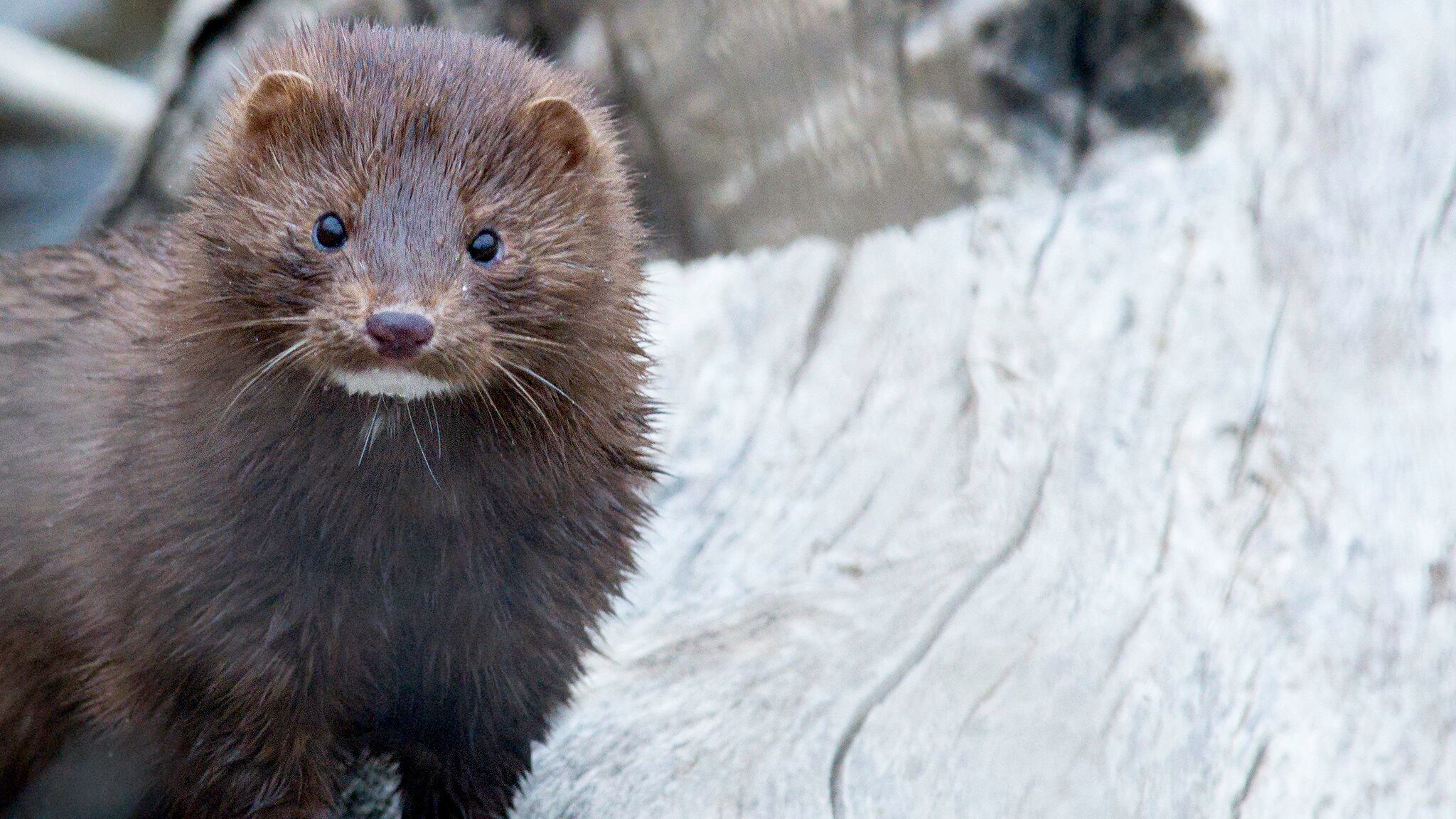Three mink have escaped from a COVID-19-infected mink farm currently under quarantine and have since been trapped and tested for the virus. The results? Two of them tested positive.
To make matters more dangerous, it's open season for mink trapping—which means trappers could be exposed to the virus.
An Oregon mink farm first reported COVID-19 virus-related symptoms in its mink back in November, and since then the Oregon Department of Agriculture and the USDA National Veterinary Services Laboratories have conducted three rounds of COVID-19 tests.
The most recent test showed that two out of the 62 minks tested had COVID-19, meaning there is still an outbreak at the farm two months after the initial outbreak was reported. The previous test had no cases, but the ODA will continue testing until two consecutive testing rounds come back negative, a press release says.
The state continues to withhold the name of the mink farm, even as its sick mink escape into the wild.
From Nov. 15 to March 31, it's open season for anyone with a license to hunt or trap mink, which puts humans and wildlife at further risk of contagion, said Lori Ann Burd, environmental health director for the Center for Biological Diversity.
The ODA wrote in a press release that it will continue testing and surveilling the Oregon mink farm, unidentified under medical confidentiality laws, as a result of the positive tests.
While infected mink are escaping, no mutations have been detected yet, the state says. But Burd says she believes it's only a matter of time.
"It is a concern because [the virus] has mutated in Europe," Burd says. "It seems like they're tempting fate. I hope it doesn't happen, but we know these facilities are reservoirs for disease, and we know mutations happen, and we know it spreads between mink and human."
The ODA's press release says these are new infections, not reinfections.
"Genome testing also confirms that all the infected mink have the same strain of SARS-CoV-2 with no mutations. This is positive news because it is very likely the new infections occurred during regular operations, which include moving the animals and some consolidation," said Dr. Ryan Scholz, ODA state veterinarian, in the press release.
Burd believes that the ODA lacks transparency about its findings and how it is handling the situation. The Center for Biological Diversity released statements of its concerns about mink infections before the outbreak even occurred. (COVID-sickened mink had been killed en masse in Europe.)
"They are not social animals. Their confinement is unnatural," Burd says. "This points to the fact that this is too dangerous. There's no social good, and the risks are incredibly high."
The farm where the infections were reported has 12,000 mink and is one of 11 registered in the state. However, the number of smaller farms not large enough to be required to register is unknown.
Burd says hunters typically trap mink to sell the animal's pelt, or fur, and this transmission from pelt processor to mink is highly documented in Europe. "If someone traps a mink and they bring it to a taxidermist," she says, "there's no effort to control COVID in that way."
The Oregon Department of Fish and Wildlife is helping surveil and capture escaped mink, said ODFW spokeswoman Michelle Dennehy in an emailed response.
"The location of the farm in relation to trapping and wild mink and risk to the public is hard to measure it is so low. There are so few wild mink and the odds that they'll be anywhere near a positive facility is exceptionally low," Dennehy says. "But in general, we tell trappers and anyone handling wildlife to practice good hygiene when dealing with animals—wear gloves, wash hands, report signs of illness in wildlife."
Mink are native to Oregon, they're fast animals, and they have multiple genetic relatives that include river otters, wolverines and badgers, Burd says.
"They're interacting with lots of other species," Burd says. "I have no idea what it would do if an eagle picked up an infected mink or if a mink unsuccessfully eats a mouse. Will they get COVID? The risk of spread into the wild is unbelievable when you think about the number of mink they have in the facilities."
Both ODA and and ODFW say there is no evidence of wild mink that've contracted the virus, and ODFW is aware of all animals captured as well as their test results.
"This industry is secretive because they know it's not acceptable to people that fur farming is happening in Oregon." Burd says. "[The farm is] not producing something we need to survive—they're producing a luxury good likely shipped to China. It seems obvious that the state would want to buy the farm and shut it down, but they don't. It's frustrating to see the state say everything is fine."
